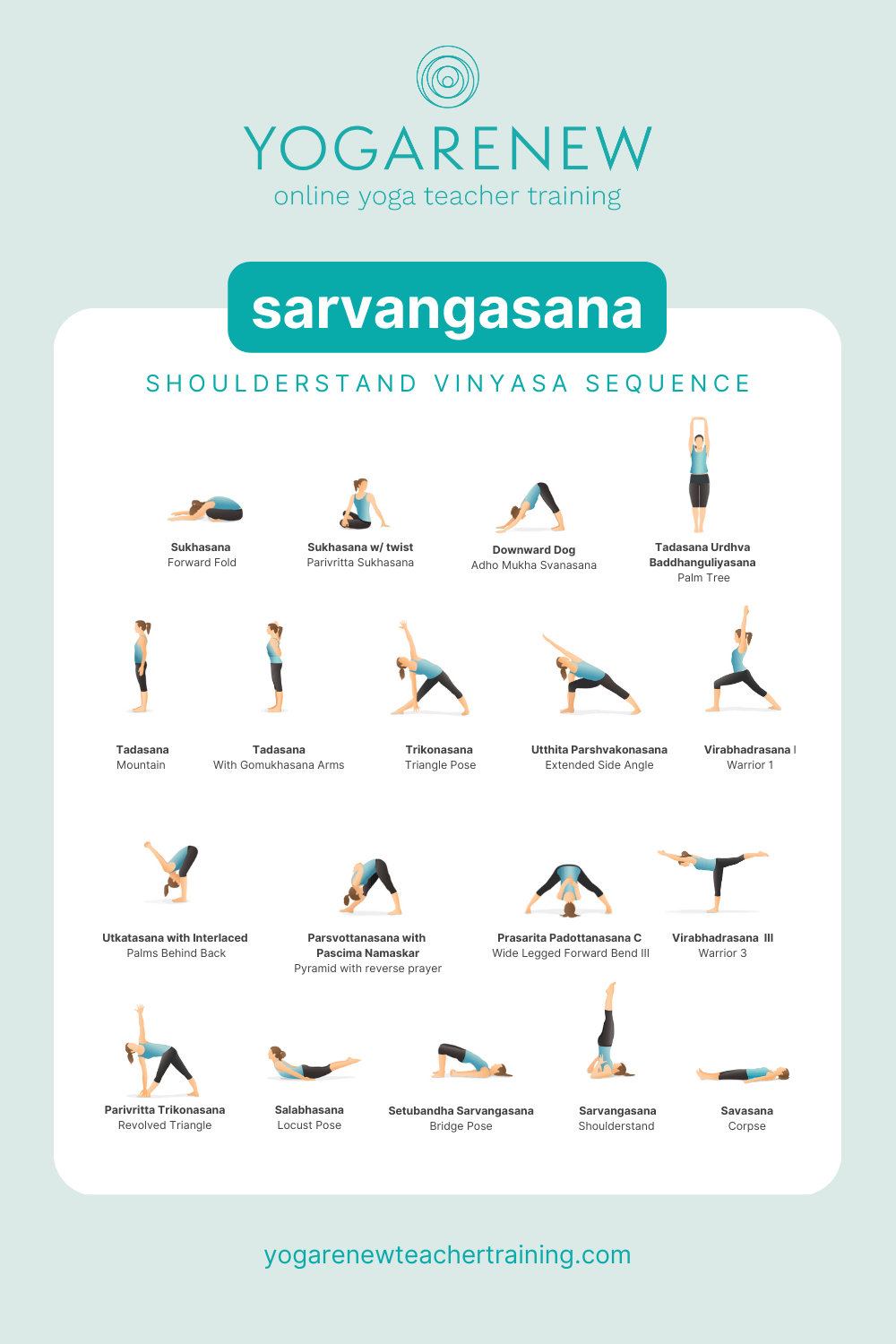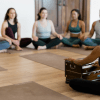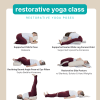
Sarvangasana, aka Shoulderstand, is often referred to as the Queen of all Poses. Inverted postures in general revitalize the entire system. Shoulderstand specifically has many wonderful benefits when practiced consistently and with care. Even though the posture is physically challenging, the pose is therapeutic in nature and has many qualities that help quiet the mind, calm the nervous system, reduce stress and anxiety, improve sleep, quell fatigue, and support overall immune health. Physically, Sarvangasana stretches the neck and shoulders, strengthens the upper back, and tones the legs. It’s a full body pose.
Even though this pose has a great many benefits, it should be practiced with precision and care. The proper position of the head, neck and shoulders are essential for practicing this pose safely.
Even though “classically” this pose is practiced without the use of props, it is helpful to utilize 2 or 3 blankets to lift the shoulders which reduces the amount of flexion in the cervical spine. This enables students to support the weight on the shoulders, as the name suggests, instead of the neck. Practicing Sarvangasana in this way can greatly reduce the risk of injury. In addition, utilizing props can reduce the amount of strain or tension while practicing the pose which can enhance the therapeutic benefits that were discussed earlier.
For this sequence, we look to prepare the body for Sarvangasana by opening the back and shoulders, straightening and extending the legs fully, while remaining mentally clear and quiet. During puttering the focus is on shoulder mobility. Poses such as Urdhva Baddhanguliyasana , Paschima Baddhanguliyasana, and gomukhasana start to move the arms in various positions. Standing poses like Trikonasana, Parsvottanasana with Paschima Namaskar, and Prasarita Padottanasana C emphasize straightening the legs with various arm and shoulder movements. As we transition towards the floor, the seated twist Bharadvajasana with bind is a fantastic pose that opens the chest, back, and shoulders. Lastly, before moving towards Sarvangasana, we practice Setu Bandha Sarvangasana, also known as Bridge Pose, which is the perfect pose to help set up of Shoulderstand. It includes many of the essential alignment points and key actions without the students having to fully invert.
The idea is to keep the mind quiet and equanimous, while the body works to maintain lightness as it ascends upward.
Puttering/Warm-Up:
- Sukhasana Forward Fold
- Sukhasana w/ Twist
- Downward Dog
- Tadasana w/ Urdhva Baddhanguliyasana
- Tadasana w/ Paschima Baddhanguliyasana
- Tadasana w/ Gomukhasana Arms
Sun Salutations:
- 3-4 Rounds
Standing Poses:
- Triangle
- Extended Side Angle
- Warrior 1
- Utkatasana with Interlaced Palms Behind Back
- Parsvottanasana with Pascima Namaskar
- Prasarita Padottanasana C
Balance Pose:
- Warrior 3
Twist Pose:
- Revolved Triangle
Seated Poses:
- Bharadvajasana w/ Bind
Backbend:
- Salabhasana
Wind Down Poses:
- Bridge Pose
Peak Pose:
Sarvangasana / Shoulderstand
Savasana
Give it a try and let us know how it goes! To catch a few video clips of this sequence in action follow @patrickfrancojr and @yogarenewteachertraining on Instagram.
If you want more in-depth vinyasa sequences like this along with teaching notes + tips on how to cue them, enter your email below to grab our FREE guide:




